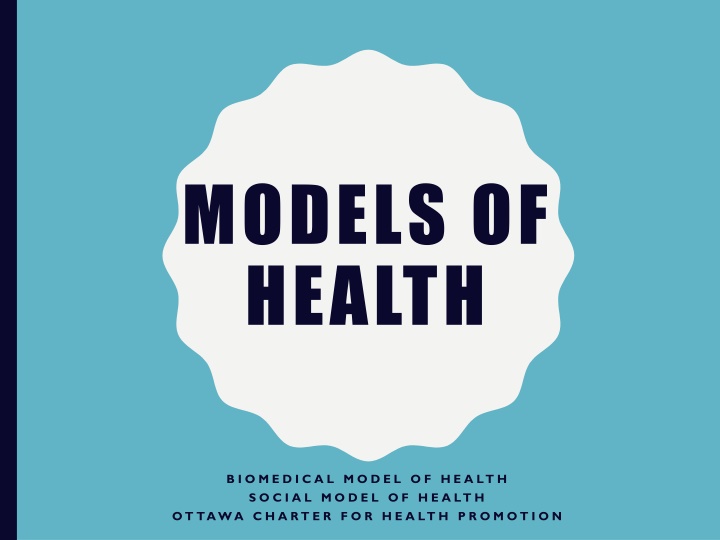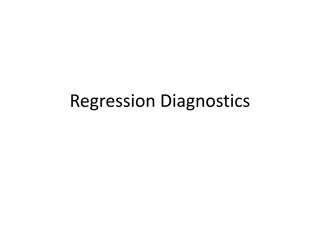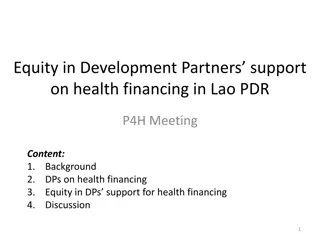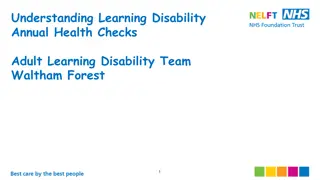
Models of Health: Biomedical vs. Social Approach
Explore the differences between the Biomedical and Social Models of Health. The Biomedical model focuses on diagnosis and treatment by health professionals, while the Social model considers broader influences like social determinants. Discover the advantages and disadvantages of each model and how they impact healthcare outcomes.
Download Presentation

Please find below an Image/Link to download the presentation.
The content on the website is provided AS IS for your information and personal use only. It may not be sold, licensed, or shared on other websites without obtaining consent from the author. If you encounter any issues during the download, it is possible that the publisher has removed the file from their server.
You are allowed to download the files provided on this website for personal or commercial use, subject to the condition that they are used lawfully. All files are the property of their respective owners.
The content on the website is provided AS IS for your information and personal use only. It may not be sold, licensed, or shared on other websites without obtaining consent from the author.
E N D
Presentation Transcript
MODELS OF HEALTH B I O M E D I C A L M O D E L O F H E A LT H S O C I A L M O D E L O F H E A LT H OT TAWA C H A RT E R F O R H E A LT H P R O M OT I O N
BIOMEDICAL MODEL OF HEALTH Is the quick fix or bandaid approach to health Centres around health professionals eg doctors, hospitals, medication Refers to diagnosis, treatment and cure. Has been around for thousands of years
What are some advantages and disadvantages of this model?
BIOMEDICAL MODEL OF HEALTH ADVANTAGES: DISADVANTAGES: Relies on professional health workers and technology Narrow view of health (individual focus rather than holistic view) Not every condition can be treated Expensive Advancement in technology Effective treatment Extend life expectancy Improve quality of life Watch 'Town of Allopath' video on learning page
SOCIAL MODEL OF HEALTH Definition: The Social Model of Health takes into account the SOCIAL, CULTURAL, ENVIRONMENTAL and ECONOMIC determinants which AFFECT health and produce INEQUITIES within the population rather than the disease or injury itself. Key Point: If these determinants can be addressed, many diseases eg CVD, diabetes mellitus Type 2, obesity can be prevented.
SOCIAL MODEL OF HEALTH Addresses the broader influences on health eg social, cultural, environmental & economic factors, rather than the disease or injury itself It does this by taking into account the social determinants of health E.g. access to health care, SES, social connectedness as if you have those, you will have a higher health status and many diseases can be prevented or managed. Works together with the Biomedical Model of health
PRINCIPLES OF THE SOCIAL MODEL OF HEALTH Addresses the broader determinants of health Acts to reduce social inequities Empowers individuals & communities Acts to enable access to health care Involves intersectoral collaboration
Addresses the broader determinants of health: Acknowledges the influence of GENDER, CULTURE, RACE, ETHNICITY, SES, GEOGRAPHICAL, LOCATION and the influence they can have on health status & health Acts to reduce social inequities: If community/government can improve SES, or social exclusion or issues with race or gender, health status will improve Empowers individuals & communities: People will change their behaviour if they feel they have control and know how to do it
Acts to enable access to health care: If people have affordable, cultural and geographical access to health care, their health status will improve Involves intersectoral collaboration: Many different organisations and community groups can work together to improve health status
SOCIAL MODEL VS BIOMEDICAL MODEL EXPLAINED Biomedical and social models video on learning page
SOCIAL MODEL OF HEALTH ADVANTAGES? DISADVANTAGES? Promoted good health and assists in preventing diseases Promotes overall wellbeing Relatively inexpensive Focuses on population groups that are in need Education is passed on Health isn t the responsibility of just the individual but also health sectors Not every condition can be prevented Does not promote the development of technology and medical knowledge Does not address the health concerns of an individual Health promotion messages can be ignored.
COMPARISON OF THE TWO MODELS Biomedical Model of Health Social Model of Health
SOCIAL MODEL VS BIOMEDICAL MODEL OF HEALTH Explain why it is important to have both the biomedical and social models of health if we are to improve health status. (2 marks)
http://www.who.int/entity/healthpromotion/conferences/previous/en/hpr_logo.jpghttp://www.who.int/entity/healthpromotion/conferences/previous/en/hpr_logo.jpg OTTAWA CHARTER FOR HEALTH PROMOTION (OF TEN R EF ER R ED TO A S THE OTTAWA CHA RTER )
Health promotion refers to enabling people to increase control over, and to improve their health. Ottawa Charter : provides a framework on which to develop health promotion policies.
OTTAWA CHARTER PREREQUISITES Based on certain prerequisites that must be in place for improvement in health to occur o Peace o Shelter o Education o Food o Income o Social justice & equity o Stable ecosystem o Sustainable resources eg food, water, timber for building
STRATEGIES FOR HEALTH PROMOTION Advocate: actions which work to gain support from governments to improve all of the determinants of health, so lobbying governments for that bike path or new drink driving laws Enable: Helping people (enabling) to achieve equity in health by improving access to education, jobs, shelter. Should occur by empowering people to take control of own health, not by handouts Mediate: Changes which promote health could lead to conflict between different groups eg banning smoking outside cafes. Health professionals and officials need to mediate with all stakeholders to show the positive health effects and to listen to concerns.
ACTION AREAS: OTTAWA CHARTER Build Healthy Public Policy Create Supportive Environments Strengthen Community Action Develop Personal Skills Reorient health services Bad Cats Smell Dead Rats
Build Healthy Public Policy: Any law or policy by governments & organisations which will improve health o Eg. seat belt law, or no bullying in schools, or no smoking in public areas; removing taxes on healthy foods. Create Supportive Environments: Helps people to practise healthy behaviours o Eg. Shade areas at school to encourage sunsmart behaviours; Quitline for smokers to call if they feel the urge to smoke Strengthen Community Action: o Focuses on building links between the individual & the community o Focuses on the community working together to achieve an improvement in health o Eg. local council works with older community to run free walking groups; road safety initiatives are a joint effort between government, Vicroads and TAC.
Develop Personal Skills: o Education and enhancing life skills are the key aspect of this priority area. o Eg. Attending Cooking classes; learning strategies to deal with anxiety; Slip, Slop, Slap, Seek, Slide campaign Reorient Health Services: o Getting the health profession and others to promote health, rather than diagnosing, and treating diseases o Eg. Doctors recommending physical activity to lose weight, rather than stomach stapling; dieticians coming to schools to promote healthy eating
HEALTH PROMOTION AND OTTAWA CHARTER EXPLAINED An introduction to Health Promotion and the Ottawa charter.mp4
APPLYING THE MODELS OF HEALTH Example Reducing the rates of CVD Biomedical model of Health: Surgery to assist with treating the condition Social Model/ Ottawa Charter: Focus on healthy eating and physical activity to prevent the development of CVD. Lets apply this to another ..
EXAMPLE 1 - USING THE 5 PRIORITY AREAS OF THE OTTAWA CHARTER, TRY AND ADDRESS THE ISSUE OF CHILDHOOD OBESITY AT A SECONDARY SCHOOL LEVEL. Building public policy Reorient health services Create supportive environments Childhood obesity Strengthen community action Develop personal skills
EXAMPLE 2 - USING THE 5 PRIORITY AREAS OF THE OTTAWA CHARTER, TRY AND ADDRESS THE ISSUE OF ROAD ACCIDENTS IN P PLATE DRIVERS AT A SECONDARY SCHOOL LEVEL.






















